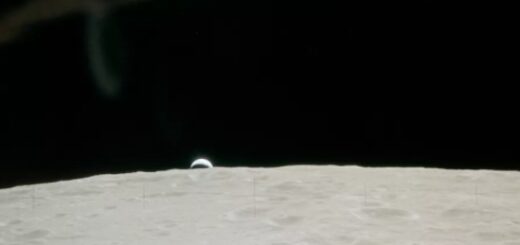Cosmic Mystery – Two Identical Exoplanets With Different Atmosphere – How Is It Possible?
Astronomers have discovered two identical exoplanets that are virtually the same size and temperature, and orbit around nearly identical stars at the same distance.
Yet, for some reason the planets have completely different atmosphere. How is it possible? Something must have happened in the past, but what mysterious cosmic force is responsible for the different atmospheric composition?
WASP-67 b and HAT-P-38 b are two “hot Jupiter” exoplanets that formed like Jupiter did, in the frigid outer reaches of their planetary system. However, instead of staying where they were, they migrated inward to be so close to their star.

Today the planets whirl around their yellow dwarf stars once every 4.5 Earth days, tightly orbiting their stars closer than Mercury orbits our Sun. The exoplanets are tidally locked, with the same side always facing the parent star. This means they have a very hot day-side and a cooler night-side.
Because these planets are virtually the same size and temperature, and orbit around nearly identical stars at the same distance, the team hypothesized that their atmospheres should be alike, but it’s not and that’s odd.
Using NASA’s Hubble Space Telescope, scientists run an experiment and discovered that planet WASP-67 b is cloudier than the other—HAT-P-38 b.
The clouds on these hot, Jupiter-like gas giants are nothing like those on Earth. Instead, they are probably alkali clouds, composed of molecules such as sodium sulfide and potassium chloride. The average temperature on each planet is more than 1,300 degrees Fahrenheit.
The team used Hubble’s Wide Field Camera 3 to look at the planets’ spectral fingerprints, which measure chemical composition. “The effect that clouds have on the spectral signature of water allows us to measure the amount of clouds in the atmosphere,” Giovanni Bruno of the Space Telescope Science Institute in Baltimore, Maryland said. “More clouds mean that the water feature is reduced.”
“This tells us that there had to be something in their past that is changing the way these planets look,” said Bruno.
It’s difficult to understand why two identical planets have different atmosphere, but perhaps the planets are not the same after all. One possibility is that one planet formed differently than the other, under a different set of circumstances. “You can say it’s nature versus nurture,” explains co-investigator Kevin Stevenson. ”
Right now, they appear to have the same physical properties. So, if their measured composition is defined by their current state, then it should be the same for both planets.
But that’s not the case. Instead, it looks like their formation histories could be playing an important role.”



 Creators of mankind
Creators of mankind Description of “Tall white aliens”
Description of “Tall white aliens” Where they came from?
Where they came from? About hostile civilizations
About hostile civilizations The war for the Earth
The war for the Earth “Tall white aliens” about eternal life
“Tall white aliens” about eternal life Video: “Nordic aliens”
Video: “Nordic aliens” Aliens
Aliens Alien encounters
Alien encounters The aliens base
The aliens base UFO
UFO Technology UFO
Technology UFO Underground civilization
Underground civilization Ancient alien artifacts
Ancient alien artifacts Military and UFO
Military and UFO Mysteries and hypotheses
Mysteries and hypotheses Scientific facts
Scientific facts


















